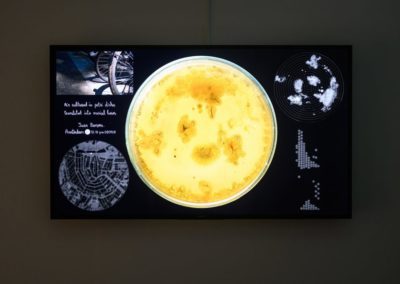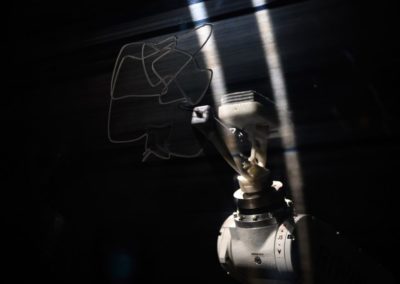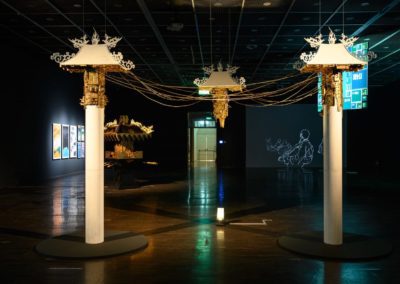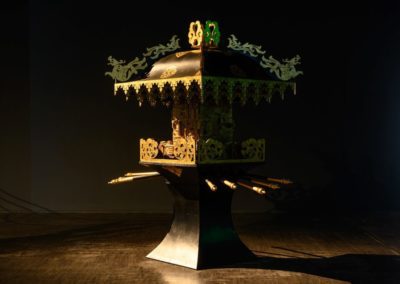Gaia: gene, algorithm, intelligent design, automata
_A Mirage self, The Other Realm
12 February 2022 – 24 April 2022
The Museum of Contemporary Art Taipei
台北當代藝術館 MoCA Taipei
Museum of Contemporary Art Taipei (MOCA)
39 ChangAn West Road Taipei 103
Taipei, Taiwan
13 of Amy Karle’s Artworks in group exhibition
Are we the creators of our own mirage in the realm we’ve created?
Through the lens of art and technology, we will examine mysteries of life and explore the questions that have haunted philosophers and artists for centuries.
Join us for an electrifying art exhibition exploring the impact of technology on our definition of life and nature. “Gaia: gene, algorithm, intelligent design, automata _A Mirage self, The Other Realm” will delve into the depths of genetic engineering, algorithm, intelligent design, and automata. Don’t miss this thought-provoking and visually stunning showcase of technology’s impact on the human experience.
The Group Exhibition: “Gaia: gene, algorithm, intelligent design, automata _A Mirage self, The Other Realm” Focuses on the technologies which impacts the definition of Life and Nature. ( Gaia is the combination of the first letter of gene, algorithm, intelligent design and automata.) With genetic engineering, humans can now alter the species of plants and animals, even mankind itself, meanwhile along with the Moor’s Law, algorithm enhanced the capability of computers, let alone the web or more precisely ”metaverse”, in the digital realm there mankind is “The Creator”. With the long history of desiring of life creation, automata appeared in the form of humanoid and accompanied with artificial intelligence. These technologies in a way challenged the belief of Evolution or we could say technologies reprint some kind of the ancient imagination of intelligent design, and Human is now a real “Creator”. Though, the technologies in now days are phenomenal, however life still remain it’s mystery, only the imagination of art could reveal the face behind the veil. If our creations are our own mirage in the realm we created?
In the dawn of modern technology era, Paul Gauguin once asked the grand eternal questions: “Where Do We Come From? What Are We? Where Are We Going?” (in 1899). Through art, artist tried to find the meaning of life and the Paradise of spirit in an industrial civilization world. Gauguin’s quest leads artists to a remote and primitive island, a place that old religion myth once promised in the long gone past. 10 years after Gauguin abandoned technological civilization, Emilio Marinetti launched a movement in his Manifesto of Futurism, which published on 5 February 1909. Marinetti expressed a passionate loathing of everything old, especially political and artistic tradition. “We want no part of it, the past, “he wrote, “We the young and strong Futurists!” Marinetti embraced the future and technology as the new territory and wonderland of human spirit and body, the Futurists admired technology and all that represented the technological triumph of humanity over nature. Gauguin and Marinetti represented two different kinds of attitude toward the cultural, spiritual impact of continually progressed science and technology. One struggling to return to the impossible mythical past; the other embraced the future and technology and tried to reinvention a new myth for modern day and modern man.
Through art, human would be able to get closer to the question: where are we from, what are we, where are we going? A question philosophers and artists have asked through time.
It’s time for our generation to ask this question again as Paul Gauguin asked before.
(Text Courtesy of MoCA Taipei)
In this group exhibition are 13 of Amy Karle’s artworks that ask the question of who we are and who we could become with advances in exponential, evolutionary, bio/technologies.
ARTISTS:
CURATORS: Shen Bo-Cheng
Images compliments of MoCA TAIPEI, “All Rights Reserved”
In art history, we may say that Avant-garde was actually born from the imagination and interpretation of science and technology, or more precisely from the invention myth of future which based on science and technology.
Comparing myth and futurology carefully, it is clear that both shared same imaginative quality. The real difference lies only in the arrow point of Time While myth continually weaves an universal interpretation about the origin of life and nature in the long gone past somewhere that human beings can never return, Sci-fi and futurology intend to fulfill the imagination in the yet to come future. The difference of two interpretation systems lies in the development of science and technology, or more precisely the development of numerical logic inference. The birth of Science and Technology makes Sci-fi and Futurology gradually replaced the interpretation of Classic Myth in the field of life and nature, meanwhile they became the new cannon of Myth in our time. Base on the above, if an exhibition which intent to present something about technology and the situation of life state in future, it’s in fact a conversation with the past and classic myth, to reveal a new world after the paradigm shift. Therefore, in the exhibition Gaia.: Gene, algorithm, intelligent design, automata _A mirage self, The Other Realm, “Gaia,” one of the Greek primordial deities and the ancestral mother of all life, would no longer just quoted from the old but rather begin with the redefinition. “Gaia” as a concept entity which composed by the technology of gene, algorithm, intelligent design and automata projects that “Technology” is now the new Maternal body of Genesis.
The second subtitle “a mirage self” and “the other realm” focus on two major concepts—one is about the definition of Human and life; the other is about the imagination of Paradise or Utopia.
The subtitle “a mirage self” is a quest about the attitude of Anthropocentrism and the development of technology. In some way, technology or the invention of tools is actually based on the extension of body function and abilities. This humanscale foundation makes the technology always a production of anthropocentrism. We imagine our better self and fulfill it through the invention of technology, and then such technology would reshape our self-imagination again. This loop became an infinite process to understand the ultimate realities of our life. However, through fulfilling each “mirage self” does not mean that we surely learn more about ourselves, but rather each fulfilled “mirage self” constituted the foundation of our self-comprehension or interpretation. For example, the gear, bearing constituted automata and mechanical theater clock in 17th century, influenced the philosophical concept of Mechanism, or IT technology and algorithm influenced the concept of epistemology about how we think and learn. The technological “mirage self” continually changes the imagination and understanding of our self-comprehension. We may invent technology; however, the truth is that technology shaped us.
If the subtitle “a mirage self” is about the definition of life and shape of body; the other subtitle “the other realm” focuses on the philosophy concept of Utopia. Be it the Garden of Eden in Bible or Plato’s “Res Publica” or even the “Sukhāvatī “of Buddhism, these philosophical meta-lands or Utopia are always somewhere a perfect world for human beings to live by and live for. However those promised “the other realm” is always a place that will never be able to arrive or achieve in this life, since those ancient Utopia exist only in the long gone “Past.” From a philosophical perspective, the interpretation of “the other realm” marks the end of the classical philosophy and the beginning of the modern philosophy. Francis Bacon’s 1626 New Atlantis turns “the other realm” from a mythical and unachievable Utopia to a scientifically and technologically achievable “Brave New World.” Moreover Bacon gave an absolutely new perspective of how a wonderland would be possible; unlike philosophers before him, Bacon’s Utopia was not founded at the base of virtue ethics frame but a scientific epistemology frame. Bacon gave the construction of wonderland a practical and physical instruction. Since Bacon, the dream of Utopia was able to fulfill through scientific method and the invention of technology. Since then, Utopia is no longer a place where it can only arrived by the bless from super nature Being, but a future which could be fulfilled through the progress of science and technology. Therefore, in some way, our contemporary world is in fact based on the Bacon’s imagination of future.
Science and technology have transformed the classical definition and image of our understanding of life, meanwhile the progress of science and technology continually construct “the other realm,” an Utopia drove and transformed by our imagination of future and the invention of new technology.
Exhibition Gaia.: Gene, algorithm, intelligent design, automata_A mirage self, The Other Realm is an attempt to invite audience to gaze and think about our contemporary world with the specific version of Bacon’s “Brave New World.” In a complex system of the technology of gene, algorithm, intelligent design, automata, the artists are the new myth interpreters to provide an insight of “a mirage self” and “the other realm.”
(Text Courtesy of MoCA Taipei)
Mmore about the exhibition at:






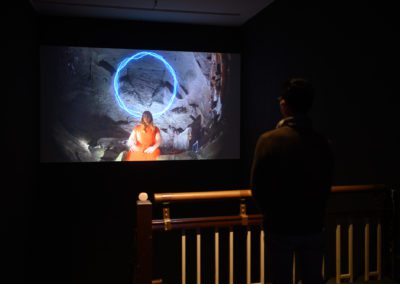

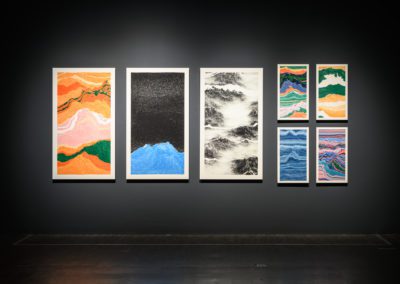

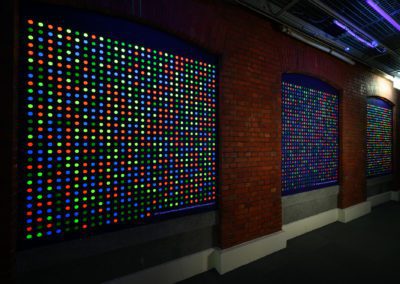
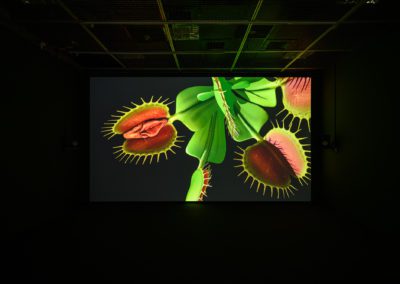

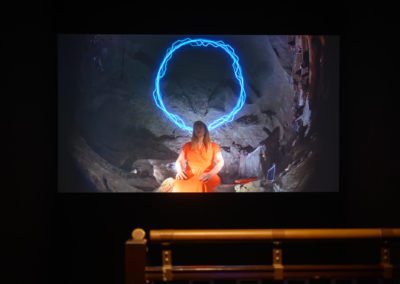
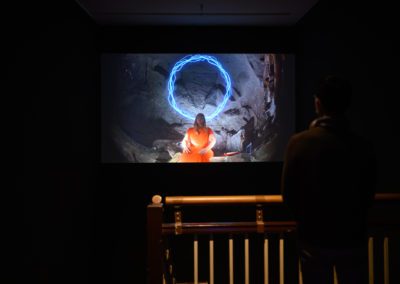

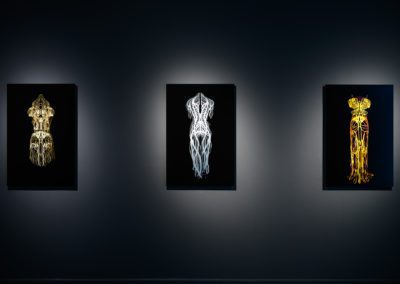
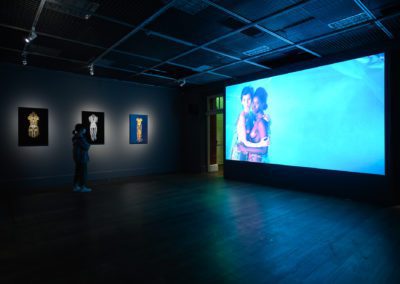
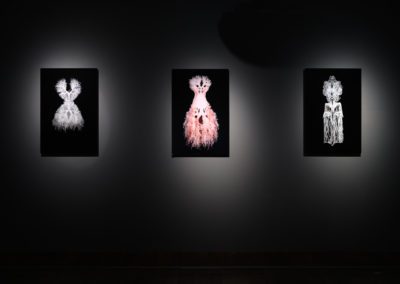
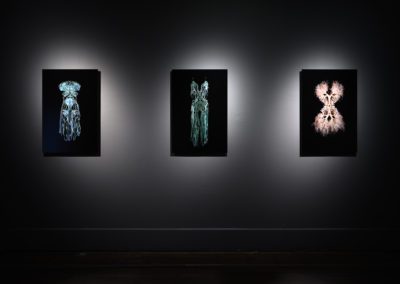
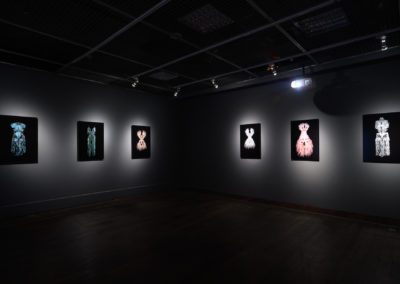
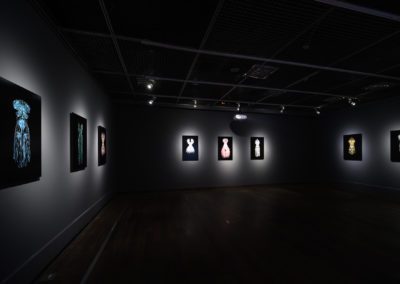





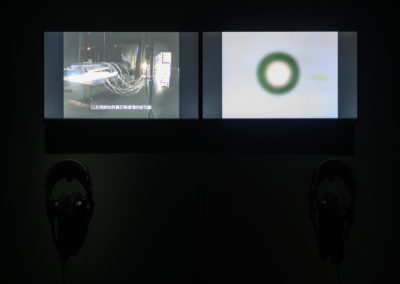
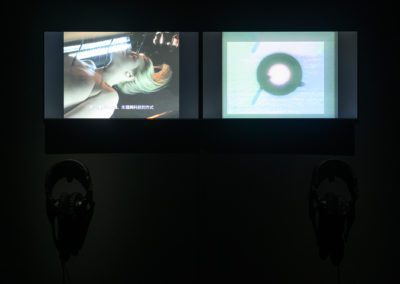

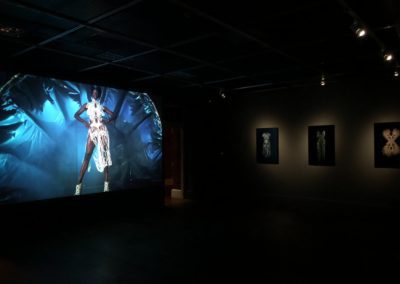
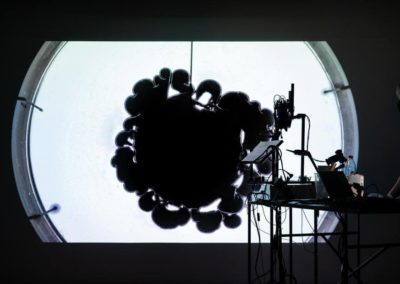
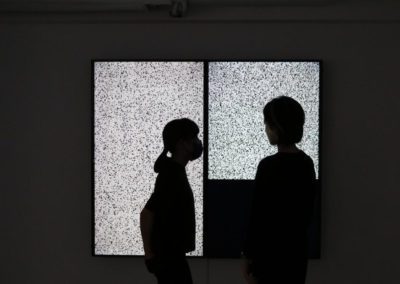





「地誌龐克」系列-2-1024x691-1-400x284.jpg?lossy=1&strip=1&webp=1)

